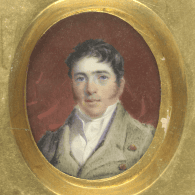
Freedom – life after serving a convict sentence
The first freed convicts in VDL were those who arrived in 1803. The better behaved of them were given land. Those who were free by the 1860s did not fare so well. The period in which freedom was given made a difference to later prospects.

Interstate and overseas migration
Statistics on the number of convicts who left the island vary widely. Historians say between 50-70%, while many locals in C19th Tasmania claimed 100%. About half were given the right to return to the UK, but most could not afford to. The vast majority of freed men and women remained in Australia because there were more opportunities for them and their children. The Victorian goldfields tempted many to leave for Victoria, where they were not welcomed.

Working
About 45% of ex-convicts were labourers, about 30% were tradesmen and about 10% were fringe dwellers, single men who survived a rough existence in the bush, hunting and living in humpies. Trades included carpenters, blacksmiths, shopkeepers, hairdressers and publicans. Most worked hard, went to church and joined local sporting groups.
- Family History Guide – Work
- Work in Tasmania: a guide to resource collections
- Police Establishment 1832-1844, 1844-1955
- ‘Blue Books’ – employment lists 1824-1855

Marriage
Transported women were encourged to marry while still under sentence so there were few single women who served their entire sentences unmarried. Some were married into the families of the free settlers. This left more single men than women for quite some time. As neither men nor women could officially remarry without evidence of their spouses death, there were many children born from a relationship rather than a marriage. State sanctioned marriage wasn’t always possible.

Children
As all levels of society may have a convict connection mentioning that someone was descended from convicts was socially unacceptable. Education was for all and private schools were open to any child whose parents could pay the fees. Illegitimate children were baptised. Destitute and orphaned children were still admitted to the Orphan schools until they closed in 1879. Adoptions were private arrangements until the 1920s, prior to that children may be boarded out.

Prosperity
About 10% of ex-convicts did very well. Those who arrived before the mid 1820s were sometimes able to get free land. After that time all Crown land was reserved for wealthy free settlers. Wealthy, well behaved ex-convicts could participate fully in business, the church and most other community activities but were not received socially by the elite. Wheat, wool and whaling were the earliest ways to prosperity. Tin mining was another means after 1870.

Convict artists
Van Diemen’s Land employed its talented convict artists and they, with freedom, could become successful from their endeavours. Prosperous settlers and ex- convicts wanted their prosperity portrayed and artists such as Costantini, Bock, Wainewright and Bull obliged. Landscape artists Lycett and Bull gave idyllic panaromas of convict era VDL.

Illness and old age
The government was obliged to take care of those who had no family support and were impoverished in their old age. The majority of these people were cared for at New Norfolk, with the sick, the aged and the insane all sharing the same accommodation. Some of the old probation stations were also used for short periods. Overall the numbers were small, as it was defintely a last resort. Females were housed at the Colonial Hospital Hobart after 1846.

Death and burials
Hobart’s early cemeteries, had become health hazards within the city by the 1850s. In the 1890s any remains were moved to the Cornelian Bay cemetery and the original cemetery sites were built over. County cemeteries fared better. Paupers were buried in unmarked graves but some records still exist. There are published indexes to the country cemeteries.
- Paupers at Cornelian Bay
- Gravesites of Tasmania
- Carr Villa Cemetery (Launceston)
- Search cemetery indexes
- Cornelian Bay Cemetery (Southern Tasmania)
- eHeritage – Tasmanian cemetery records